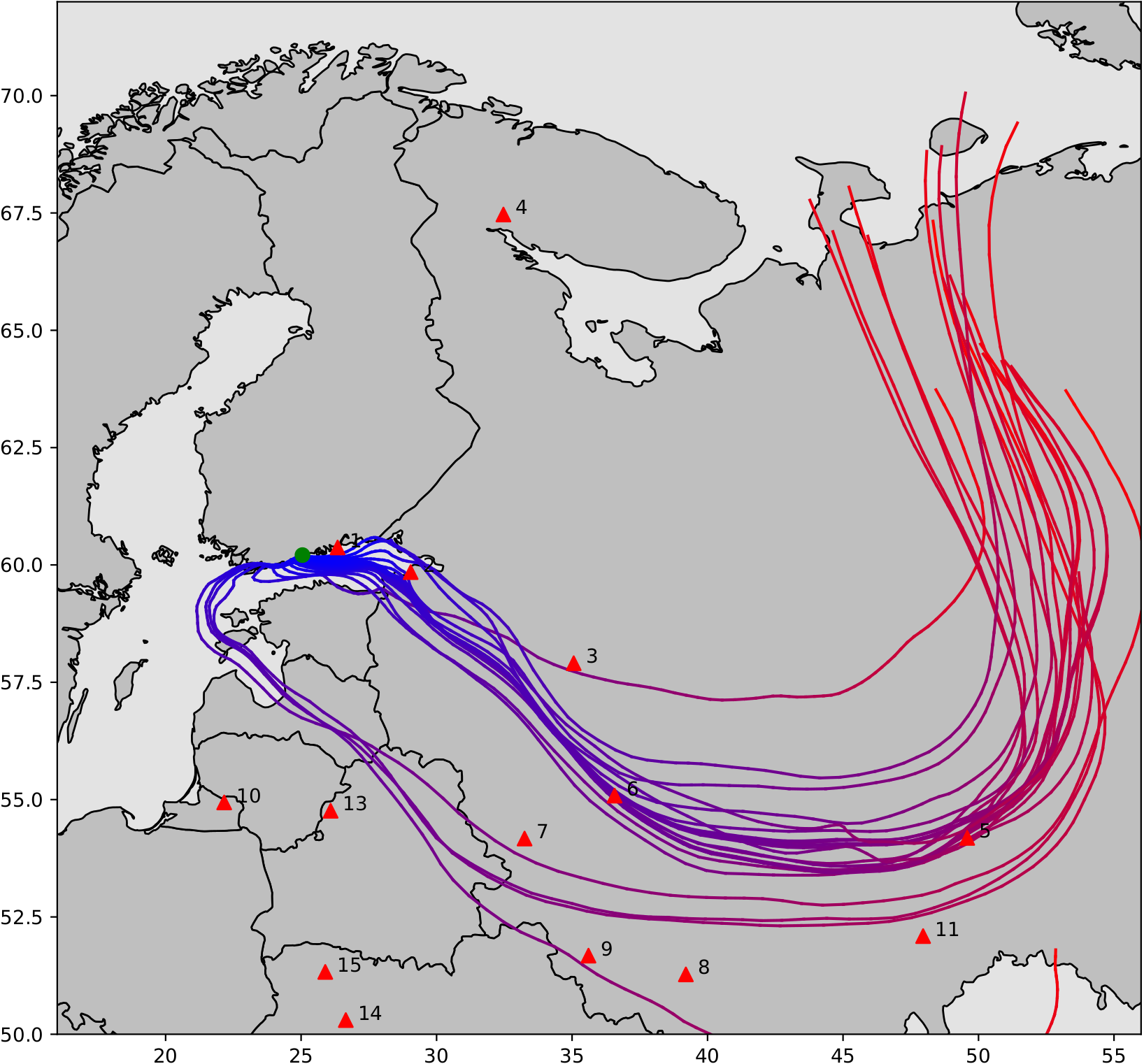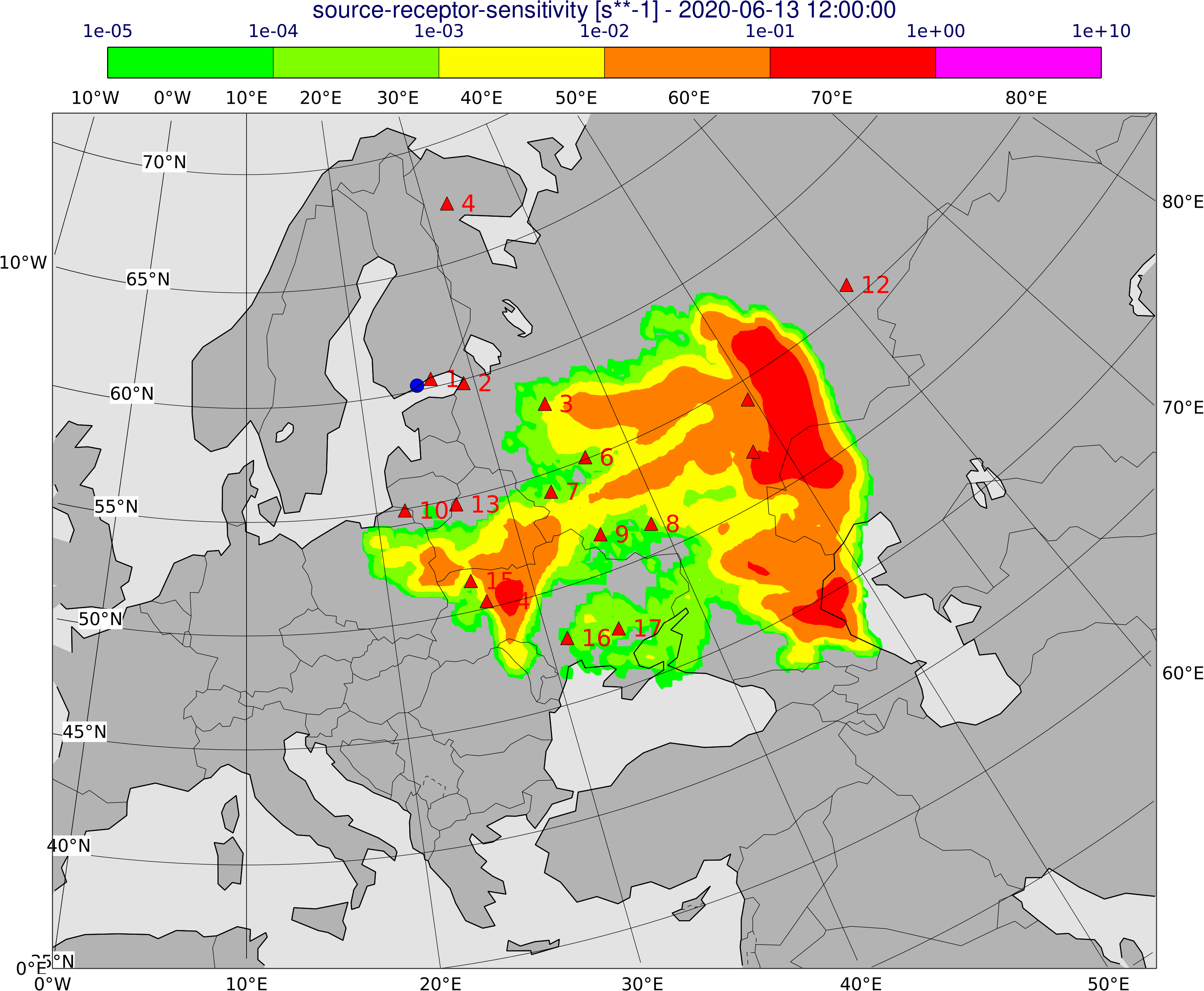Anomalous measurements of radionuclides over North-East Europe in June 2020
During the month of June 2020 several anomalous measurements of radioactive nuclides have been recorded in different countries in Scandinavia and Eastern Europe by the Ring-of-5 and CTBTO laboratories and reported later by IAEA. The registered radionuclides (a mixture of short- and long-lived) were: Ru-103, Ru-106, Cs-134, Cs-137, Zr-95, Ce-141, all of which may be connected to a minor accident in a NPP, maybe happened during refuelling. However, other characteristic short-lived isotopes that should have been released in such scenarios, i.e. noble gasses and I-131 and I-133, have not been detected. All measured data indicate that no impact on public health and environment is expected. ENEA has performed isotopic ratios and atmospheric dispersion analyses in order to pinpoint a possible region of origin of the radioactive material.

The isotopic ratios registered in the measurements have been compared with the fuel composition at discharge of VVER-1000 and RBMK-1000 calculated with ORIGEN-ARP. Unfortunately, the uncertainty connected to the measurements led to wide and inconsistent predictions on the amount of time between the reactor shutdown and the release to the atmosphere.

A first picture of the possible emission region has been estimated within 48 hours from the initial communication of the measurements using the backward trajectory approach as implemented in the NOAA code HYSPLIT. Backward trajectories of air masses starting from the measurement points travel backward in time towards the possible origins, as seen in the picture for the case of Helsinki data.

A more detailed analysis has then been performed using FLEXPART to compute the backward concentrations, that require a significantly larger amount of computational power, but take into account the turbulence dispersion in the atmosphere. One frame of the simulation for the simuation starting from the Helsinki measured data is shown in the picture.
All the simulations, computed from different measurements and combined appropriately, pinpoint the region South-West of Finland, but are not capable to determine precisely any single origin NPP. To improve the accuracy of the simulation, further data should have been collected during the first week after the release.
Further details on this work can be found at https://iris.enea.it/handle/20.500.12079/55143
Antonio Cervone
ENEA
antonio.cervone@enea.it